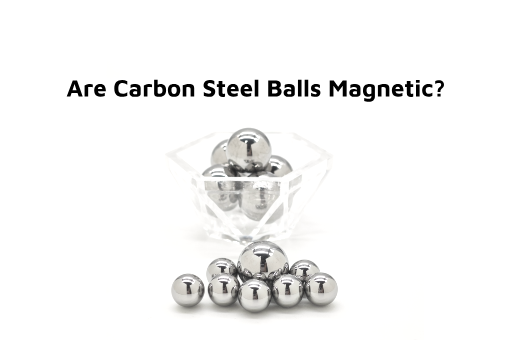
 Home > News
Home > NewsCarbon steel balls are a widely used type of steel balls in industries such as bearings, automotive components, and machinery. One intriguing aspect of these balls is their magnetic properties, which often leads to questions about their behavior in magnetic fields. This article explores the magnetic characteristics of carbon steel balls and their implications in various applications.

Carbon steel is primarily composed of iron and carbon, with trace amounts of other elements like manganese and silicon. The high iron content in carbon steel is the primary reason behind its magnetic properties. Iron is ferromagnetic, meaning it can be magnetized and strongly attracted to magnetic fields.
Yes, carbon steel balls are magnetic. Their magnetism stems from the ferromagnetic nature of iron, the predominant component in carbon steel. This magnetic characteristic is influenced by several factors, including:
Carbon Content:
Low-carbon steel (mild steel) is highly magnetic because of its pure ferritic microstructure.
High-carbon steel may exhibit slightly lower magnetism due to the presence of more carbon, which can form cementite (Fe₃C) structures that are less magnetic than pure iron.
Heat Treatment:Heat treatment processes such as quenching and tempering can alter the microstructure of carbon steel. These changes may affect its magnetic properties:
Martensitic structures (formed during quenching) are ferromagnetic.
Annealed structures may have reduced magnetic strength due to a softer ferrite-pearlite matrix.
Surface Treatments:Surface coatings like plating (zinc, nickel, or chrome) or oxidation may not significantly affect the magnetism of the core material, as they only cover the surface.
The magnetic nature of carbon steel balls has practical consequences, including:
Applications in Magnetic Bearings:Carbon steel balls are commonly used in magnetic bearings where their magnetic interaction is a functional advantage.
Separation and Sorting:Magnetic properties allow easy separation of carbon steel balls from non-magnetic materials during recycling or production processes.
Electromagnetic Interference (EMI):In electronic applications, the magnetic nature of carbon steel balls may lead to EMI, requiring careful design considerations.
Limitations in Certain Industries:In applications such as food or medical equipment, non-magnetic alternatives (e.g., stainless steel or ceramic balls) are often preferred to avoid interference with sensitive devices.
To confirm the magnetic properties of a carbon steel ball:
Use a Magnet: Place the ball near a strong magnet. If it is attracted, it is magnetic.
Check Residual Magnetism: Rub the ball with a magnet and see if it retains magnetism afterward.
These simple tests help determine whether the ball is suitable for applications requiring magnetic behavior.
Carbon steel balls are inherently magnetic due to their iron content, making them suitable for various industrial applications where magnetism is either an advantage or manageable. However, for applications sensitive to magnetic interference, non-magnetic alternatives may be necessary. Understanding the magnetic behavior of carbon steel balls helps in selecting the right material for specific needs.
Would you like to explore this topic further or discuss other types of steel balls?
View More(Total0)Comment Lists